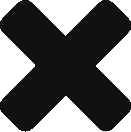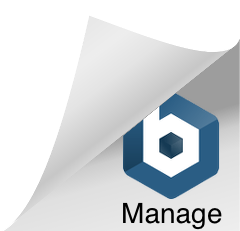NASDAQ:DXLG DESTINATION XL GROUP
Sector financial performance:
This company, who primarily sells big and tall men’s apparels in their own stores under private label or third-party brands, has been grouped into men’s apparel retailer sector in clothing industry.
The organic demand for men’s dress of stores seems to have declined in 2016/17 from previous year as indicated by comparable store sales of companies in this sector, which went down by 2% in 2016/17 as we can see that, before the second quarter of 2016, comparable store sales were still growing at 3-5% annually.
However, after entering the second half of 2017 comparable sales rebounded and this rebounding continued into 2018, which presented a more than 2% growth rate so far driven by increasing transactions and units per transaction.
Unfavourable retail industry makes the profitability of stores that performance below average more sensitive to changes in stores’ traffics. Cutting expense to boost the margin by closing unprofitable stores or slowing down new opening of stores seems to be the most direct method for some of companies to improved margin and bring in more cash flows. It is particularly true for this sector where it seems that the SG&A spending is apparently higher than other clothing retailers.
Generally, the gross margins are between 39-43% (including distribution and occupancy costs), which is very similar with other clothing retailers. However, companies in this sector usually spend almost 38% of their total sales in SG&A including advertising, which is much higher than 30% of others retailers. The difference in SG&A was not from store operation and management because store related costs such as occupancy costs are also included in gross margin calculation (the gross margins of different type of stores are very close). Therefore, it is very possible that the difference in SG&A is from somewhere else such as higher costs sales channels or more expensive advertising spending. For example, it seems that there is a much smaller portion of sales for companies in this sector that comes from e-commerce compared with other retailers since we know that e-commerce has higher margin and less SG&A spending. Therefore, heavy SG&A dragged down profitability of some of companies in this sector. ( average 3% operating margin for 2018).
According our analysis, companies’ enterprise price/EBI is around 14 with interest/EBI ratio of 48%. Enterprise price/sales is 0.55 with interest/EBI ratio of 13%.
click for more about this industry
Company performance:
Data indicated that comparable stores sales decreased in 2016/17 after the increase previous years. However, we have seen that comparable stores sales stopped declining in the second half of 2017 and presented a 2,5% growth in the first six months of 2018.
First six months of fiscal 2018 compared with 2017(ended 20180803)
The sales (excluding extra week) of this company increased about 3% (1% for 2Q) primarily attributable to increase in new opened stores sales and increase of 2.5% (3.8% for 2Q) in comparable stores sales.
Fiscal 2017 compared with 2016(ended 20180203)
The sales (excluding extra week) of this company increased about 2% primarily attributable to increase in new opened stores sales and increase of 1% in comparable stores sales.
The sales of this company increased about 1.3% in the first 6 months of fiscal 2017 compared with the same period of 2016, primarily attributable to increase in new opened stores sales offset by decrease from closure of stores and decrease of 1% in comparable stores sales.
The sales of this company increased about 1.8% in fiscal 2016 compared with 2015, primarily attributable to increase in new opened stores sales offset by decrease from closure of stores and decrease of 0.6% in comparable stores sales.
The sales of this company increased about 6.8% in fiscal 2015 compared with 2014, primarily attributable to increase of 4.8% in comparable store sales and increase in new opened stores sales offset by decrease from closure of stores.
And the addition of sales from newly opened stores has been the major driver for sales to grow in the past two years. However, leverage of expenses from those newly opened stores, occupancy costs mainly, and more promotions hurt this company’ gross margin (including occupancy costs), which has decreased from about 40% of 2014 to 38% of 2017 and rebounded back slightly in 2018(39%) due to improved occupancy margin. Therefore, because this company has managed to reduce its spending on SG&A such as by reducing advertising spending in the past three years, its operating margin has been improved slightly in 2018(-1.6%) as compared with fiscal 2014 (-2%).
Stock price
This stock currently has an enterprise price/sales ratio of 0.4, which we think, is relatively overvalued while it has a solid customers’ base to support its stores sales and its margin can be largely improved as long as it slows down the pace of opening new stores.

